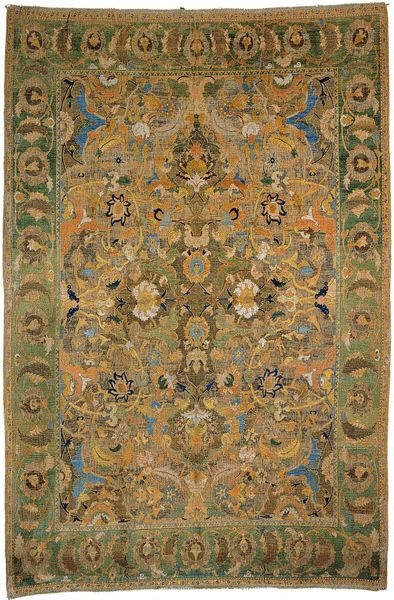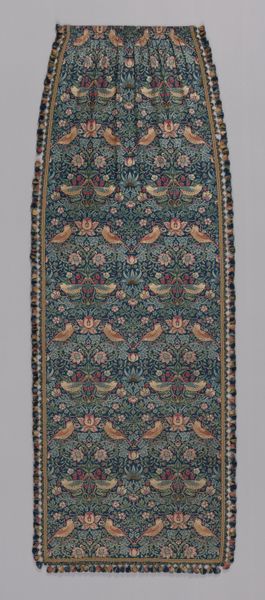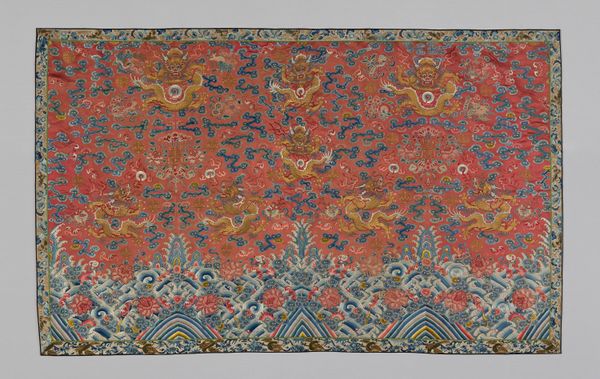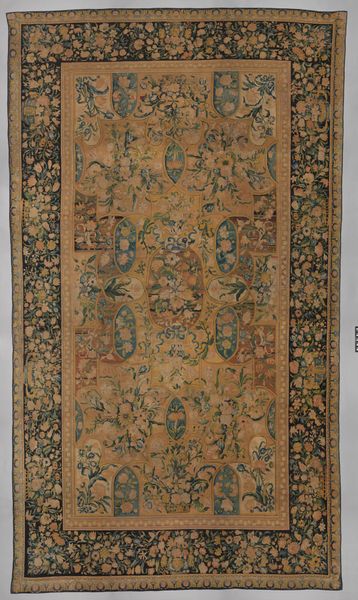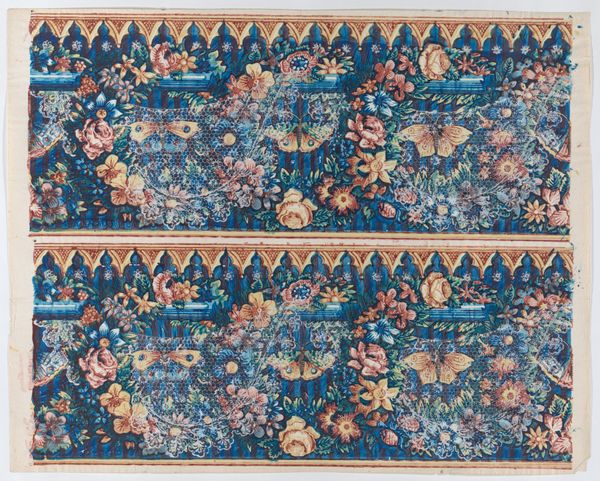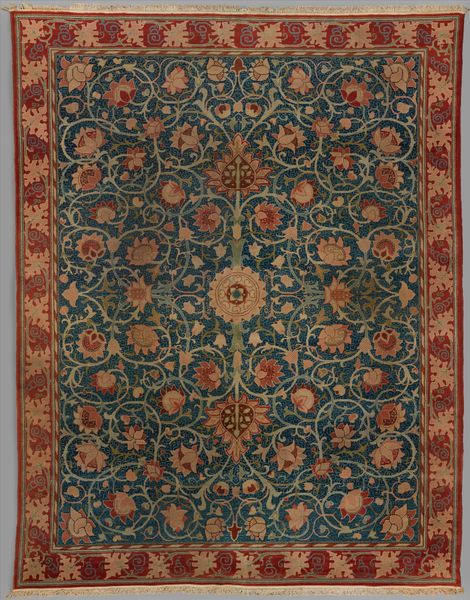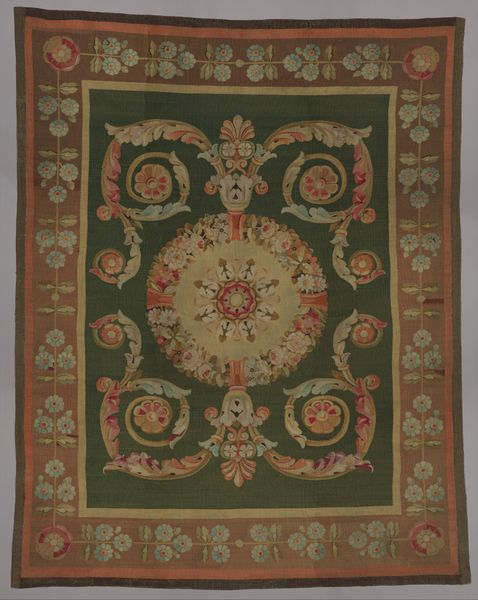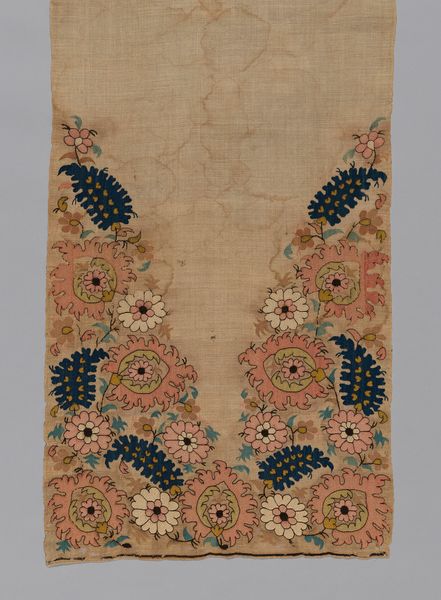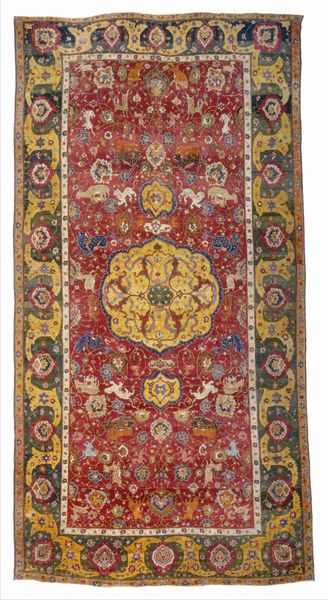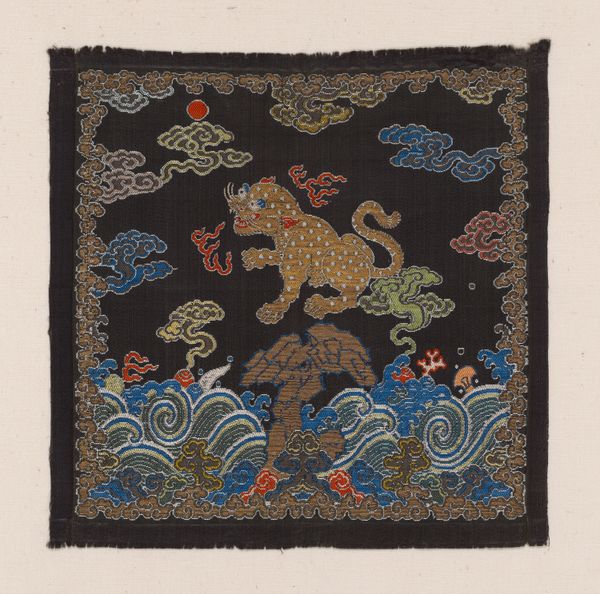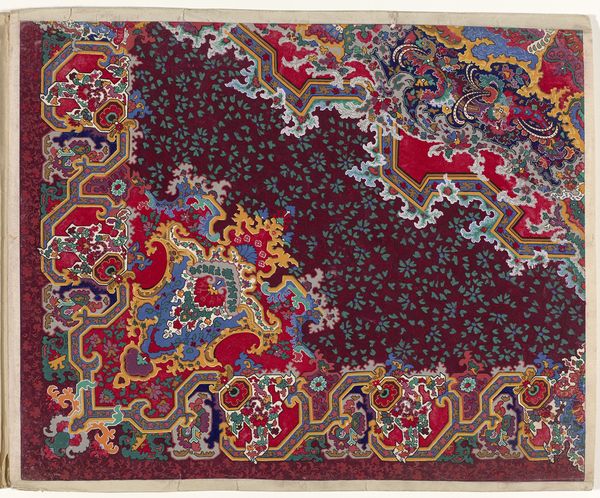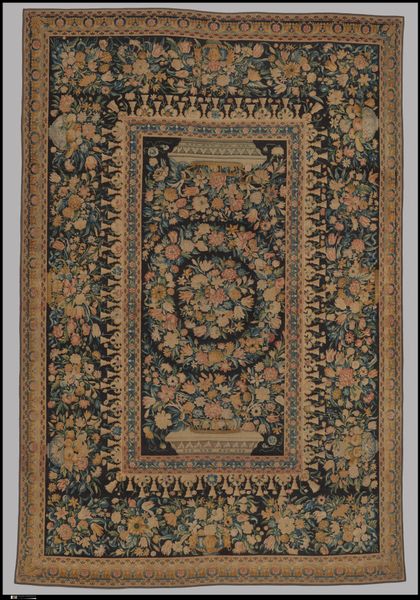
weaving, textile
#
asian-art
#
weaving
#
textile
#
geometric pattern
Dimensions: 162.2 × 83.3 cm (63 7/8 × 32 3/4 in.)
Copyright: Public Domain
Editor: Here we have what's called a "Panel (Furnishing Fabric)," which could have been made anytime from 1644 to 1911. It's at the Art Institute of Chicago, and it looks like it's made of woven textiles and maybe some kind of print on paper? What really strikes me is how dense it is, the detail packed into every inch. What’s your take on it? Curator: Considering its purpose as a furnishing fabric, let’s examine its materials. Silk weaving, potentially incorporating precious metal threads, immediately speaks to luxury. How was this textile produced? Was it the work of a large workshop, indicative of imperial manufacture and control of resources, or was it made in a small village? The variation in potential dates – almost three centuries – suggests different levels of craft production across different political economies. What does this fabric reveal about labor practices, trade routes, and the intended consumer of such an ornate piece? Editor: That's a good point. I hadn’t considered the conditions in which it was made. The possibility it was used for imperial purposes seems like it could restrict labor to a more rigid practice, right? Does the inclusion of what appears to be geometric patterns mean anything about trade, considering it’s labeled as ‘Asian Art?’ Curator: Geometric patterns and repeating motifs certainly point to the industrialization of aesthetics and suggest trade routes. These images probably appealed to merchants across cultures. Editor: This fabric really tells a story far beyond just decoration, from resource extraction to labor conditions to cross-cultural exchange. Curator: Precisely. It reframes our understanding from simple decoration to an interrogation of production, power, and social structures, embedded within the material itself.
Comments
No comments
Be the first to comment and join the conversation on the ultimate creative platform.
